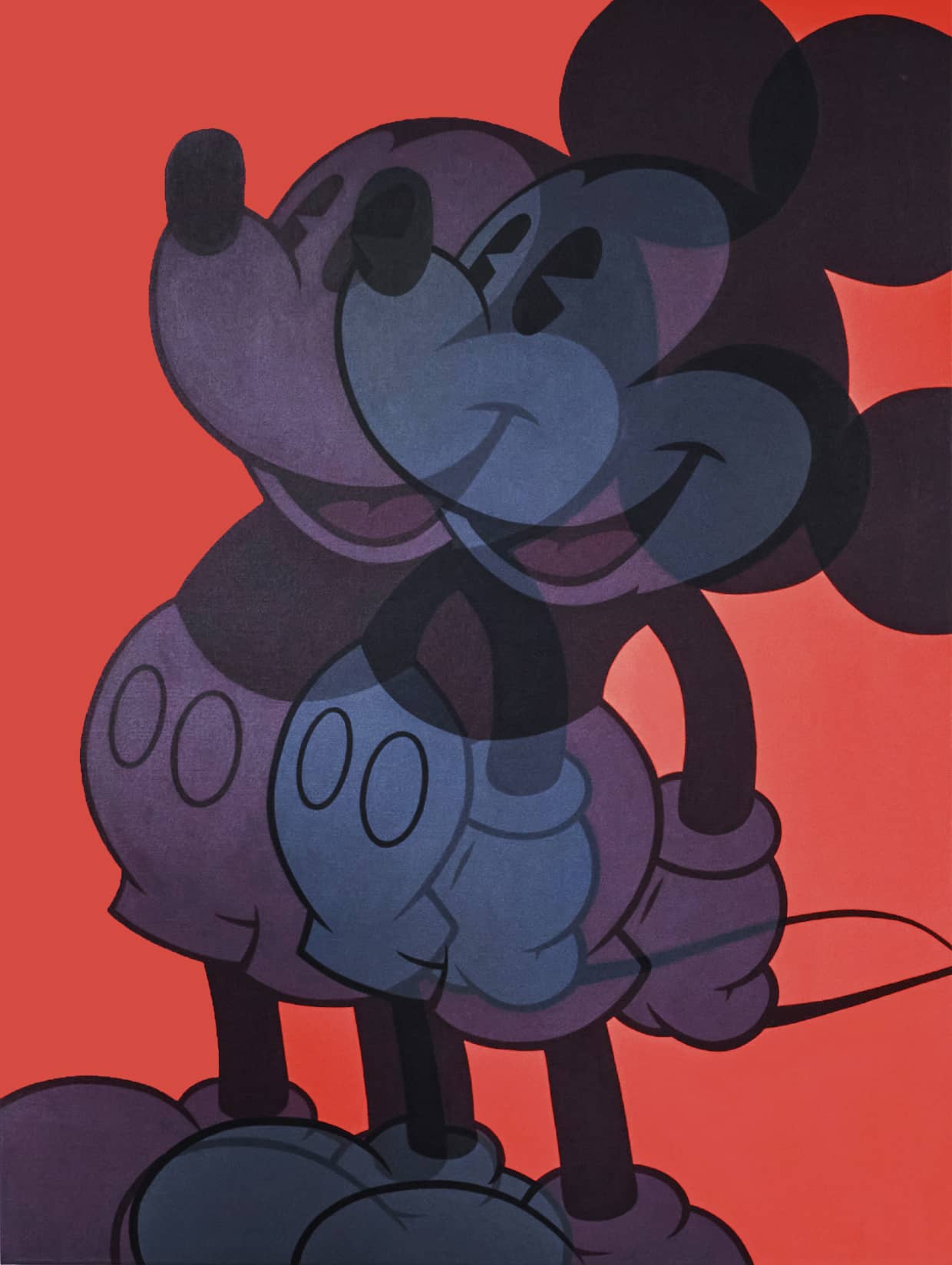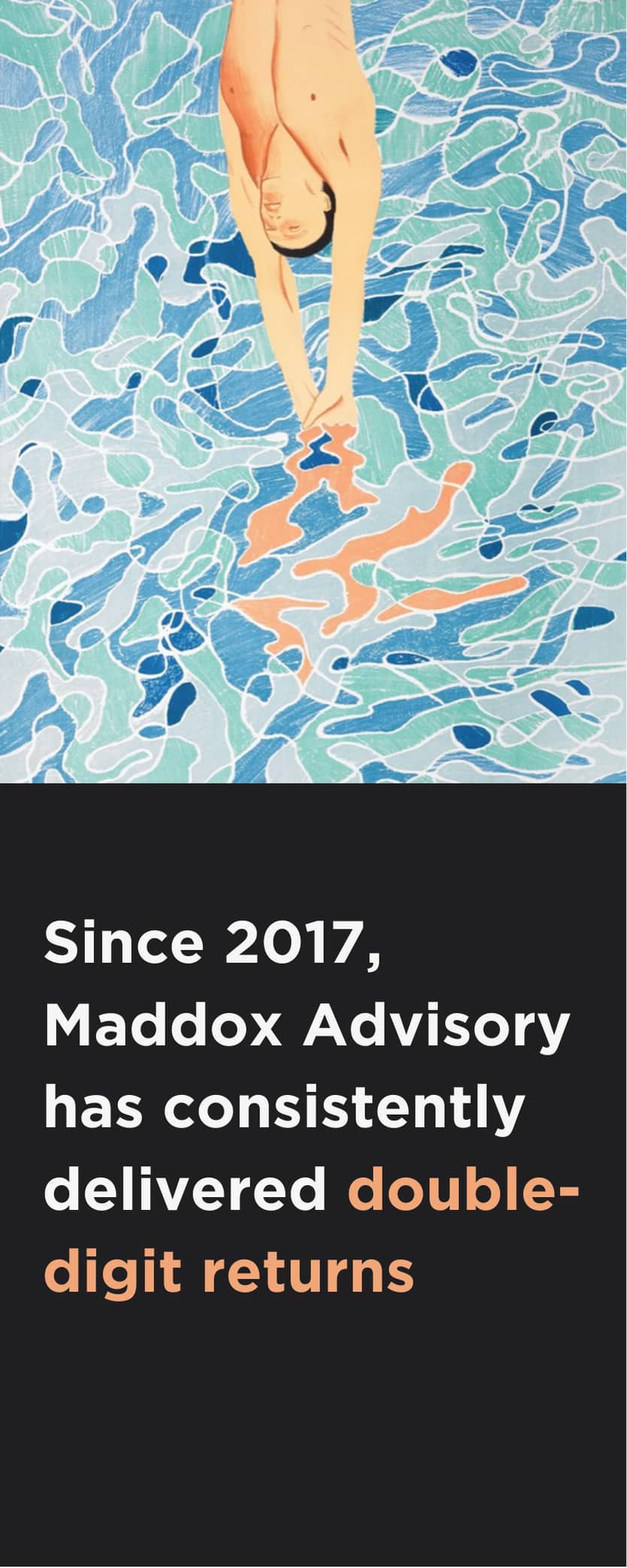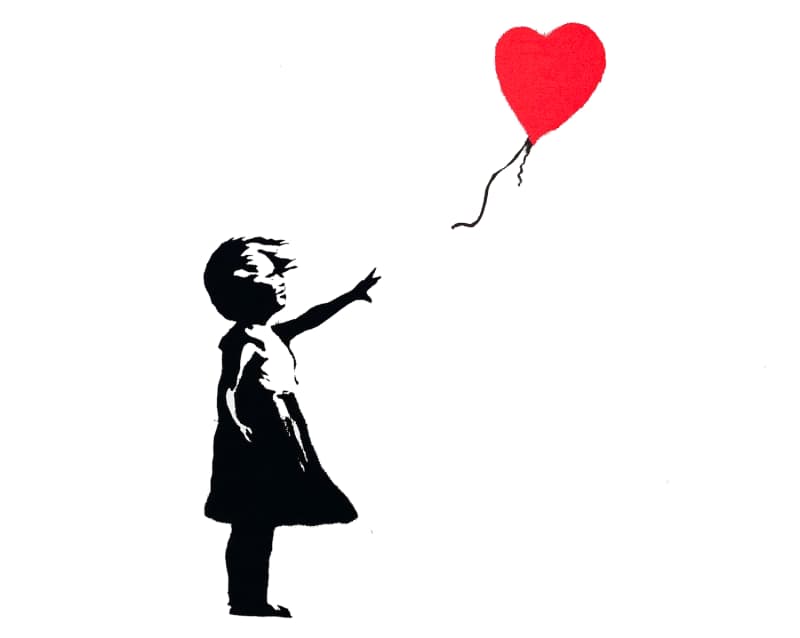Depicted by some of the art world’s most esteemed creatives, Disney cartoons and, more specifically, Mickey Mouse art, has always held a strong place within visual culture. But how exactly did America’s favourite cartoon transition from childhood icon to artistic muse, reimagined by the likes of Roy Lichtenstein, Andy Warhol, Banksy and Damien Hirst?
Last month, the Metropolitan Museum of Art announced their latest exhibition, Inspiring Walt Disney, which is due to open in December of this year. With the show set to examine how French Decorative Arts inspired the classic cartoons, the studio’s animations will soon reside under the same roof as revered paintings by artistic masters like Picasso, Titian and Van Gogh.
Whilst the show marks the very first time that The Met will explore the works of Walt Disney, the parallels between fine art and animation have a long and intertwined history. Disney cartoons and more specifically, Mickey Mouse, have always held a strong place within visual culture, so we ask ourselves, what is it about the black and white mouse that makes it so universally iconic and how did a children’s cartoon become reimagined by the likes of Roy Lichtenstein, Andy Warhol, Banksy and Damien Hirst?
Humble Beginnings
First introduced to the public in 1928, Mickey Mouse was created by Walt Disney a year before The Great Depression. Instantly embraced by the public as a symbol of hope, the cartoon offered comfort and comedic relief at a time when America needed it most. Making his debut to audiences with the short film Steamboat Willie, the character became synonymous with American ingenuity, as the 1928 short film was one of the first cartoons ever to be produced with synchronised sound.
Following his initial appearance, the anthropomorphic mouse would go on to be featured in over 130 films, swiftly gaining global fame, and becoming a symbol for both Disney and America, conflated into one.
DAMIEN HIRST, MICKEY & MINNIE, 2016
Mickey Mouse’s multifaceted connotations, as well as his iconic visual status, meant that artists began to embrace the character. 20th century artist and husband of Frida Kahlo, Diego Rivera wrote in an article that future historians would “find that Mickey Mouse was one of the genuine heroes of American art in the first half of the 20th century”. American pop-artist Roy Lichtenstein also noted that Mickey Mouse was “an American symbol” and in 1961, the artist created Look Mickey, an oil on canvas that featured the cartoon animal and marked the artist’s move into pop art.
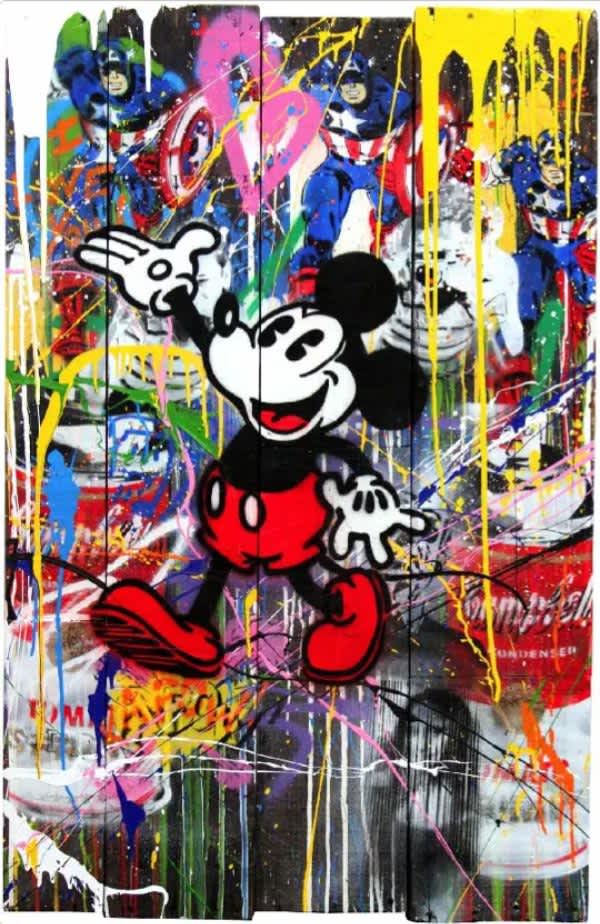
Look Mickey and the 1980s Mouse
Although pop art as a genre emerged from Britain in the mid 1950s, by the mid 1960s the style reached its peak in the United States, becoming synonymous with America itself. Therefore, there seems no character more fitting for Lichtenstein’s germinal pop artwork, than Mickey Mouse, the emblem of the United States. Not only is Look Mickey a pioneering work for the pop art movement, but the work is also one of the first depictions of Mickey Mouse in the art historical canon.
In fact, the work holds such gravitas that Scottish contemporary artist, Ross Muir, has reimagined the image for his latest print release. Taking Lichtenstein’s original and updating the work in his signature style, adding the adornments of contemporary society in the form of a Gucci belt and a Fred Perry Polo, Muir has humorously reconfigured the work for a modern audience. Adding extra text that reads ‘Cool Story Bro . . .’ but keeping the original composition, Muir’s print plays upon the multifaceted meanings of Lichtenstein’s work whilst staying true and authentic to his own Scottish roots.
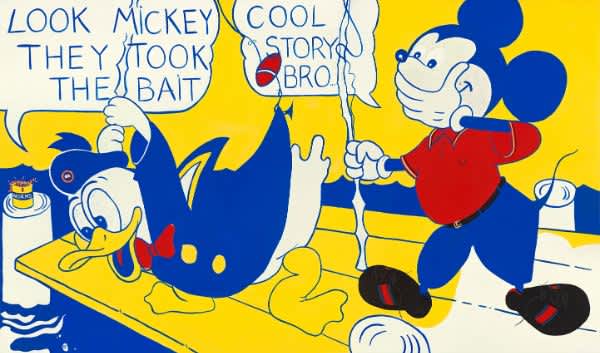
ROSS MUIR, THEY TOOK THE BAIT, 2021
Following Lichtenstein’s portrayal of Mickey Mouse in Look Mickey, a choice that was encouraged by the artist’s son Mitchell, the Disney character began appearing in many pop artworks and in 1981, Andy Warhol also featured the mouse.
Known for his typically American works, in the early 1980s, Warhol strayed from his more traditional canvases depicting celebrities and everyday objects, turning to Walt Disney for inspiration. Earlier that year, Warhol had gone to see “Disney Animation and Animators”, an exhibition at the Whitney Museum of American Art celebrating the artistry of the cartoons. The artist was instantly struck by the public’s positive reaction to the characters, prompting him to create works detailing Mickey Mouse and Donald Duck. Talking about the mouse, Warhol reportedly said that “Mickey Mouse is my favourite actor! Minnie Mouse is my favourite actress! My own favourite personal hero is Walt Disney”.
Throughout his career, Warhol constantly cited Walt Disney as a key artistic influence so it comes as no surprise that the artist would turn to his earliest influence in the last few years of his life. Mickey Mouse was both a personal hero for Warhol, as well as a beloved symbol of American ingenuity and resilience to the wider public, making the artist’s Disney works an instant success.
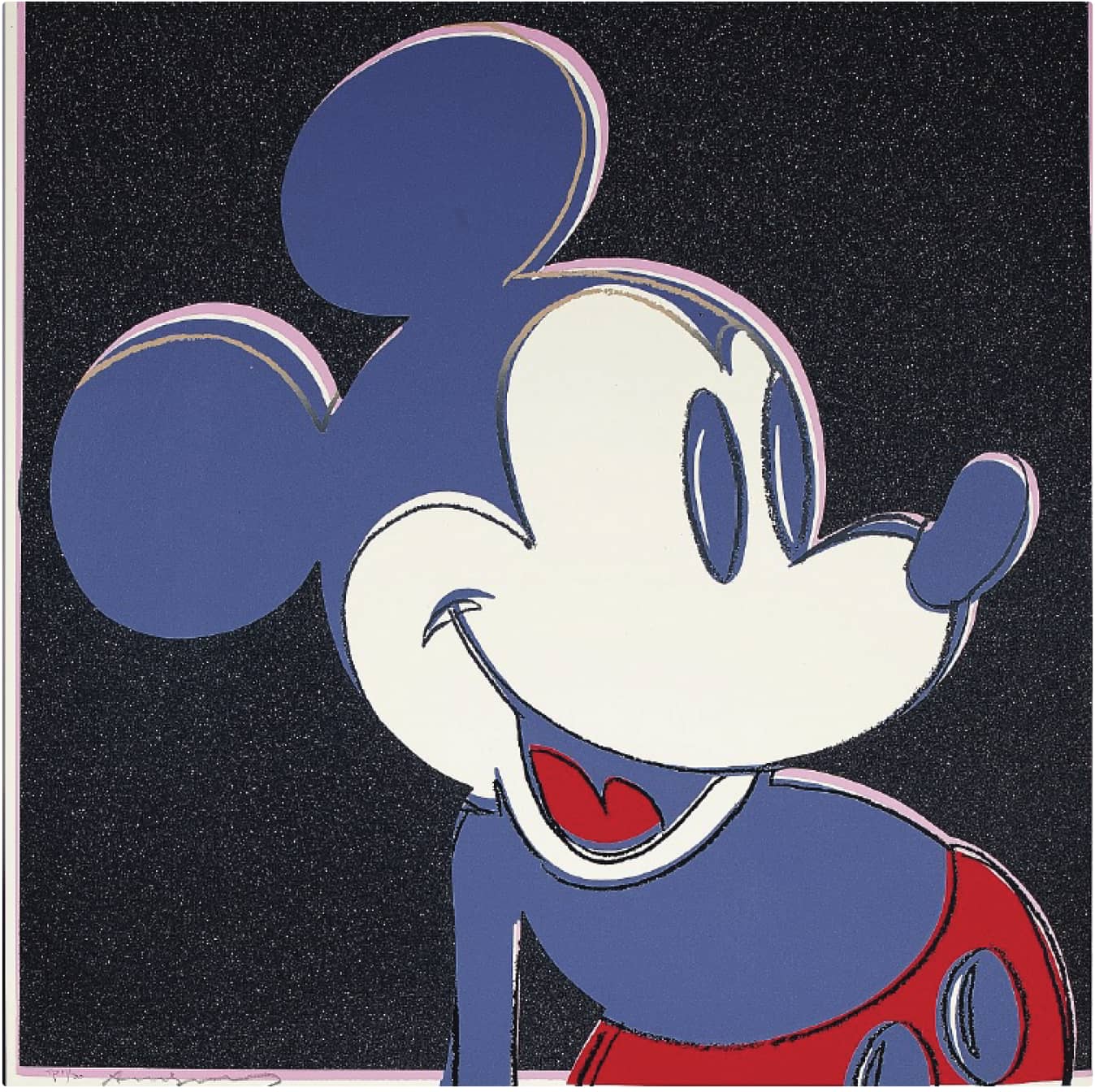
ANDY WARHOL, MICKEY MOUSE (UNIQUE TRIAL PROOF), 1981
From Mickey to Modern Art
Since then many other artists have painted the iconic character. In 2012, at the invitation of Disney, Damien Hirst reimagined Mickey Mouse as one of his renowned spot paintings. Talking on the subject, Hirst said “Mickey Mouse represents happiness and the joy of being a kid and I have reduced his shape down to the basic elements of a few simple spots. I hope people love it, because it is still instantly recognisable - Mickey is such a universal and powerful icon”. The easily identifiable shapes and colours associated with the mouse – the circular head and ears and the monochrome and primary palette – means that visually Mickey Mouse is a great character to abstract and adapt to personal artistic styles.
DAMIEN HIRST, MICKEY (BLUE GLITTER), 2016
Call Pest Control!
Mickey Mouse has not just pervaded the walls of galleries and museums, however. His adaptable and recognisable features, along with his symbolic representation of both America and childhood, means that he has become a staple subject matter in street art too. From Banksy’s controversial Napalm image featuring the mouse as a sign of American capitalism to the more nostalgic and joyous works of Jerkface and Mr. Brainwash, Mickey Mouse can be found in artwork across the world.
Nearly 100 years after Walt Disney first created Mickey Mouse, the cartoon continues to pervade every facet of pop culture. Be it music, literature, or art, it seems that the eponymous mouse holds the same resonance today as he first did in 1928. Whether he has survived due to his iconic and recognisable appearance that lends itself to reinterpretation, or due to his symbolic status representing childhood dreams, American spirit, or capitalism, Mickey Mouse continues to live on in our collective consciousness and inspires contemporary art around the globe.
JERKFACE, DOUBLEREDBLACK, 2021



